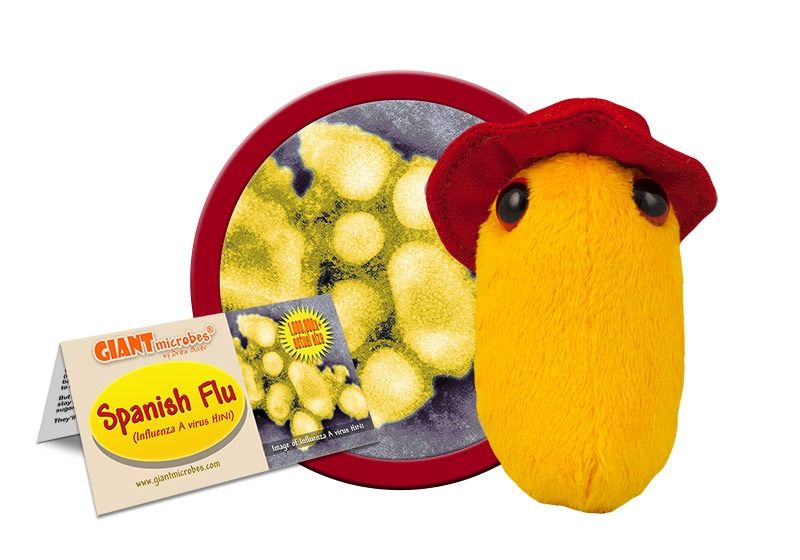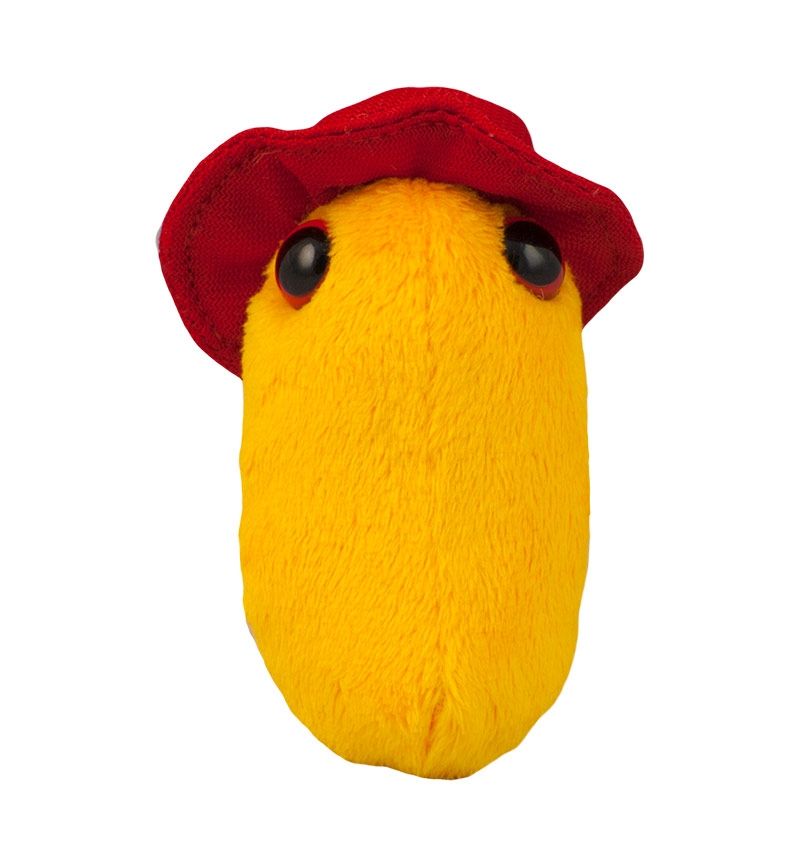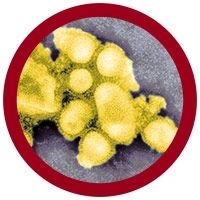Spanish Flu (Influenza A virus H1N1)
In a typical flu season up to 500,000 people will die. The 1918 pandemic sickened up to 40% of the world, killing an estimated 50 million!
Product Details
Additional Information
| Sizes | Giantmicrobes are based on actual microbes, cells, organisms and other critters, only 1,000,000 times actual size! Gigantic (GG) 16-24" XL (XL) 10-15" Original (PD) 5-8" Keychain (KC) 2-4" with clip |
|---|---|
| Materials | Plush from all new materials. Stuffed with polyester fiber fill. Surface washable: sponge with water & soap, air dry. |
| Packaging | Each plush microbe includes a printed card with fun, educational and fascinating facts about the actual microbe or cell. |
| Safety | Every product meets or exceeds U.S. and European standards for safety. For ages 3 and up. |
All about Spanish Flu (Influenza A virus H1N1)
FACTS: There were four influenza pandemics in the last century. The 1918 Spanish flu was the mother of all pandemics in two ways: it was the deadliest and remnants of that viral strain led to the other outbreaks. The Spanish flu likely began in Kansas. With WWI underway it quickly spread globally. In a typical flu season up to 500,000 people will die. The 1918 pandemic sickened up to 40% of the world and killed an estimated 50 million!
Flu viruses come in many strains. They can change rapidly into strains for which people have no immunity.
What made the Spanish flu so exceptional was that it even overwhelmed the bodies of those with strong immune systems, hitting young adults especially hard. These days it’s wise to get the annual flu vaccine even though it only protects against certain strains. Immunity from one strain does not protect against another. The Spanish flu should be a huge reminder that the chance of another deadly influenza pandemic is a true possibility. And in case you are wondering what they called the Spanish flu in Spain itself; it was known there as the French flu.






